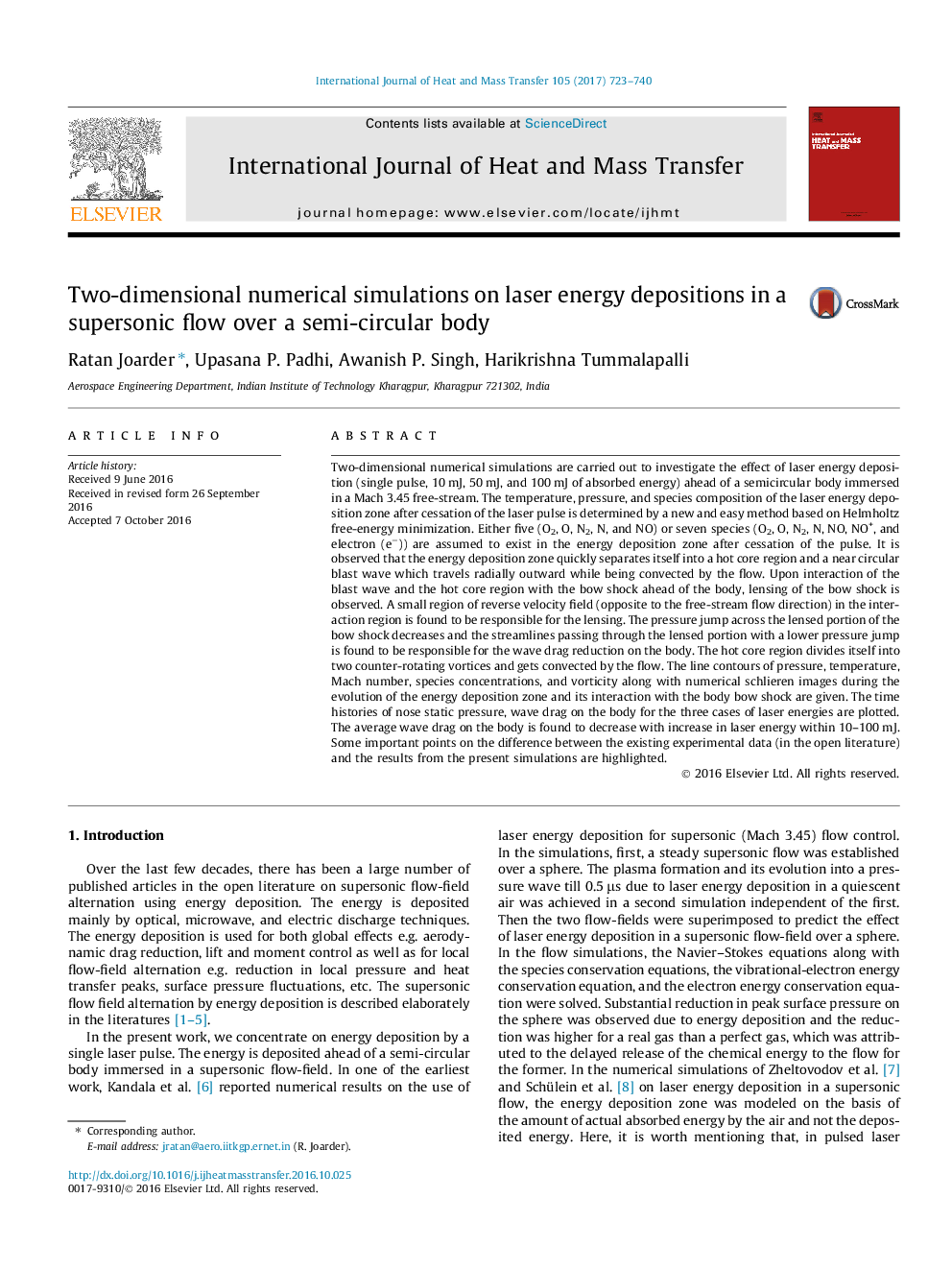| Article ID | Journal | Published Year | Pages | File Type |
|---|---|---|---|---|
| 4994728 | International Journal of Heat and Mass Transfer | 2017 | 18 Pages |
Abstract
Two-dimensional numerical simulations are carried out to investigate the effect of laser energy deposition (single pulse, 10Â mJ, 50Â mJ, and 100Â mJ of absorbed energy) ahead of a semicircular body immersed in a Mach 3.45 free-stream. The temperature, pressure, and species composition of the laser energy deposition zone after cessation of the laser pulse is determined by a new and easy method based on Helmholtz free-energy minimization. Either five (O2, O, N2, N, and NO) or seven species (O2, O, N2, N, NO, NO+, and electron (eâ)) are assumed to exist in the energy deposition zone after cessation of the pulse. It is observed that the energy deposition zone quickly separates itself into a hot core region and a near circular blast wave which travels radially outward while being convected by the flow. Upon interaction of the blast wave and the hot core region with the bow shock ahead of the body, lensing of the bow shock is observed. A small region of reverse velocity field (opposite to the free-stream flow direction) in the interaction region is found to be responsible for the lensing. The pressure jump across the lensed portion of the bow shock decreases and the streamlines passing through the lensed portion with a lower pressure jump is found to be responsible for the wave drag reduction on the body. The hot core region divides itself into two counter-rotating vortices and gets convected by the flow. The line contours of pressure, temperature, Mach number, species concentrations, and vorticity along with numerical schlieren images during the evolution of the energy deposition zone and its interaction with the body bow shock are given. The time histories of nose static pressure, wave drag on the body for the three cases of laser energies are plotted. The average wave drag on the body is found to decrease with increase in laser energy within 10-100Â mJ. Some important points on the difference between the existing experimental data (in the open literature) and the results from the present simulations are highlighted.
Related Topics
Physical Sciences and Engineering
Chemical Engineering
Fluid Flow and Transfer Processes
Authors
Ratan Joarder, Upasana P. Padhi, Awanish P. Singh, Harikrishna Tummalapalli,
